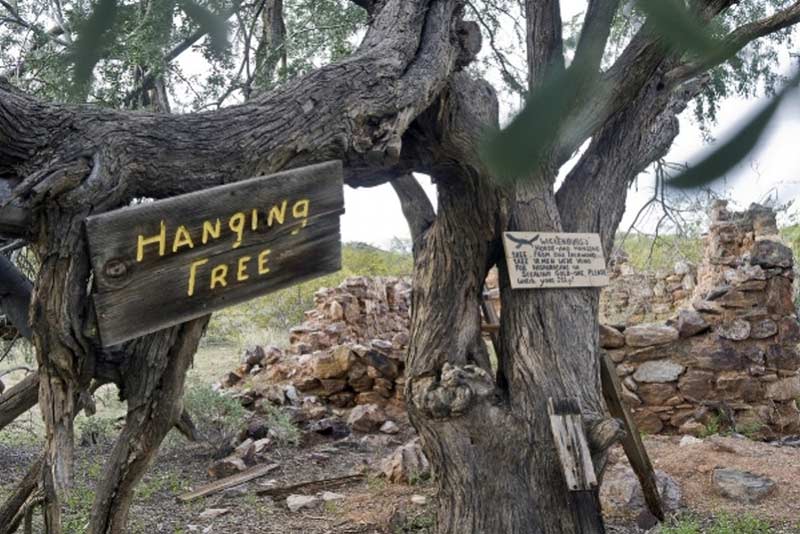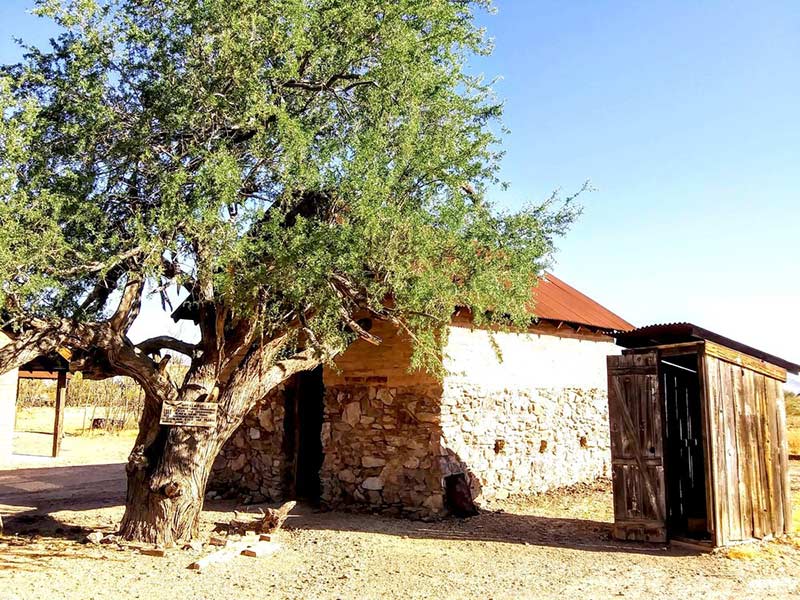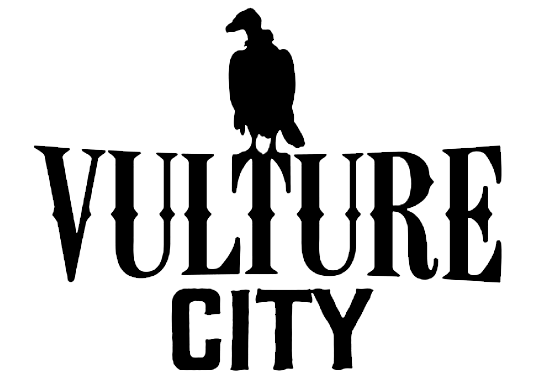
Restoration of the remaining buildings are nearing completion and curating/landscaping have become the new focus. With over 15 faithfully restored buildings and countless artifacts, the town provides a glimpse of the mining culture and lifestyle in the American Southwest in the late 19th and early 20th centuries. Visitors are invited to explore the heart of the once-booming mining town. Please visit the information page for more details about the tour.
Construction began in 1884 on this stone, adobe, metal and concrete two story lab, utilized to assay ore samples and produce Doré bars (semi-pure alloy of gold and silver). The building housed a bullion room, guards quarters, an office and a company store.
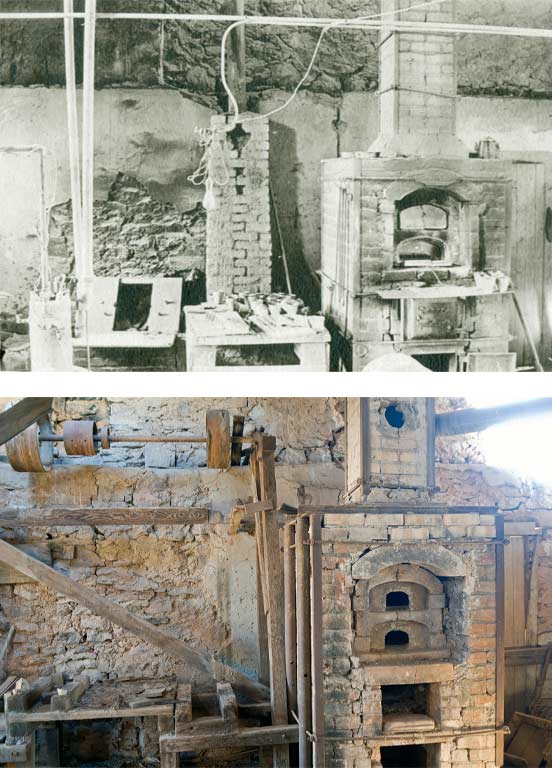
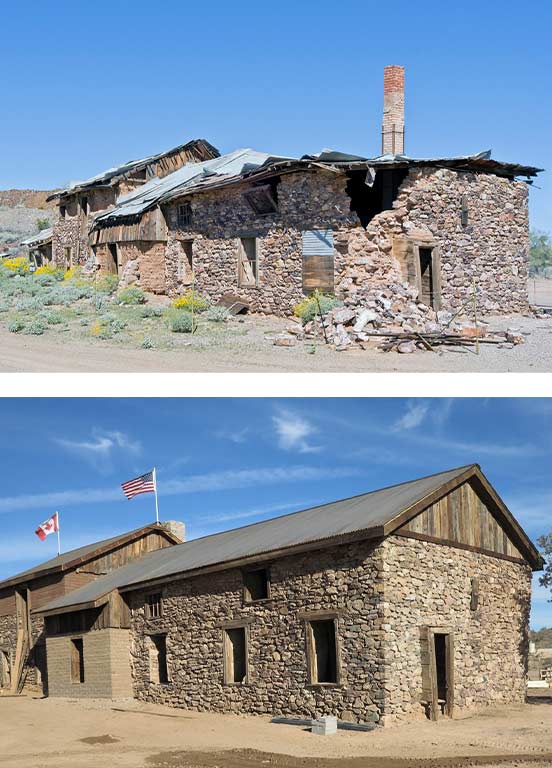
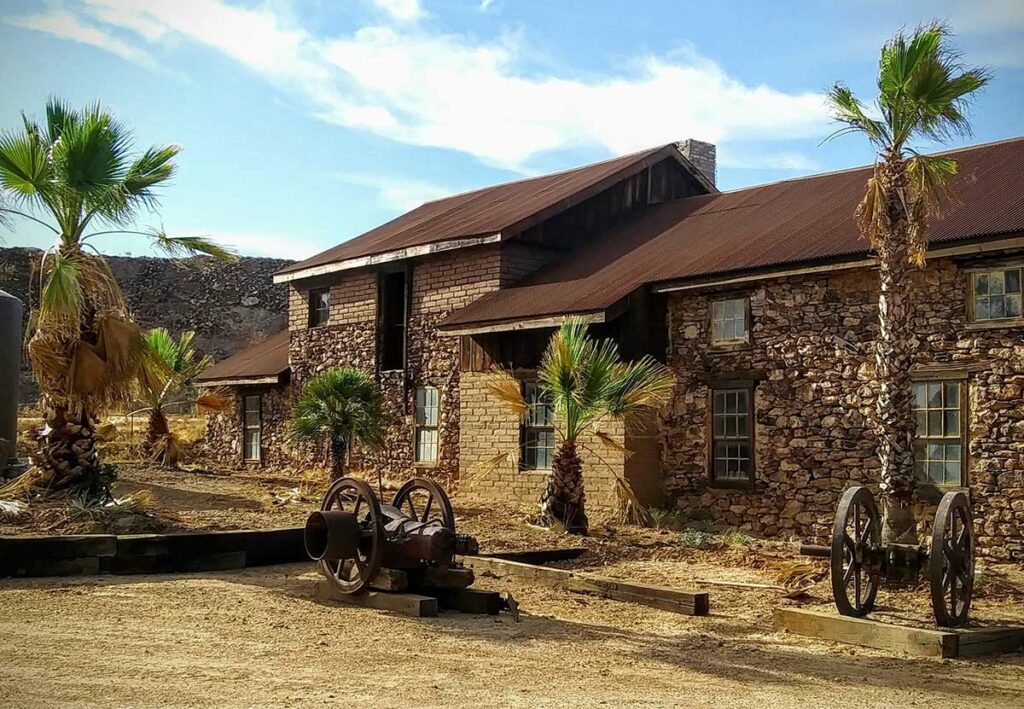
Constructed in the 1890’s, the Cookhouse mess hall and saloon were made from wood, rock, and adobe, which does not do well in the rain. The roof collapsed during a seasonal storm. The kitchen was constructed in the early 1900s from wood and concrete. A seventeenth century stove, large ice box and other fascinating artifacts remain.
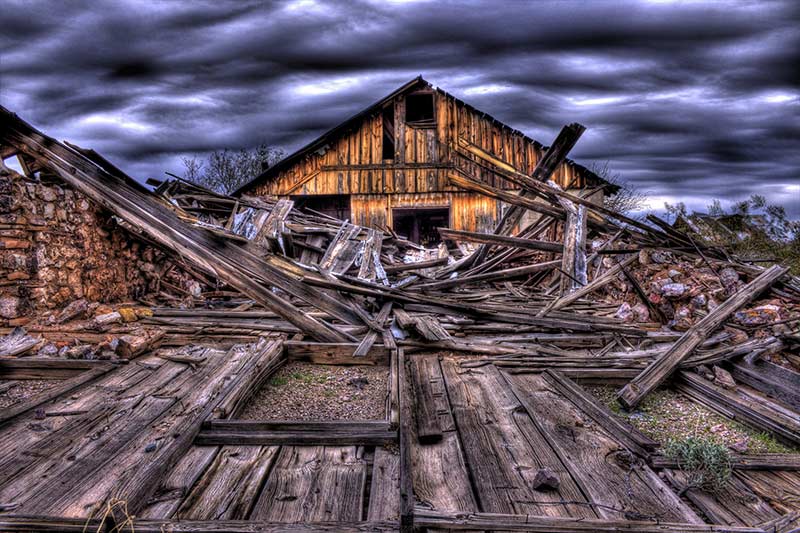
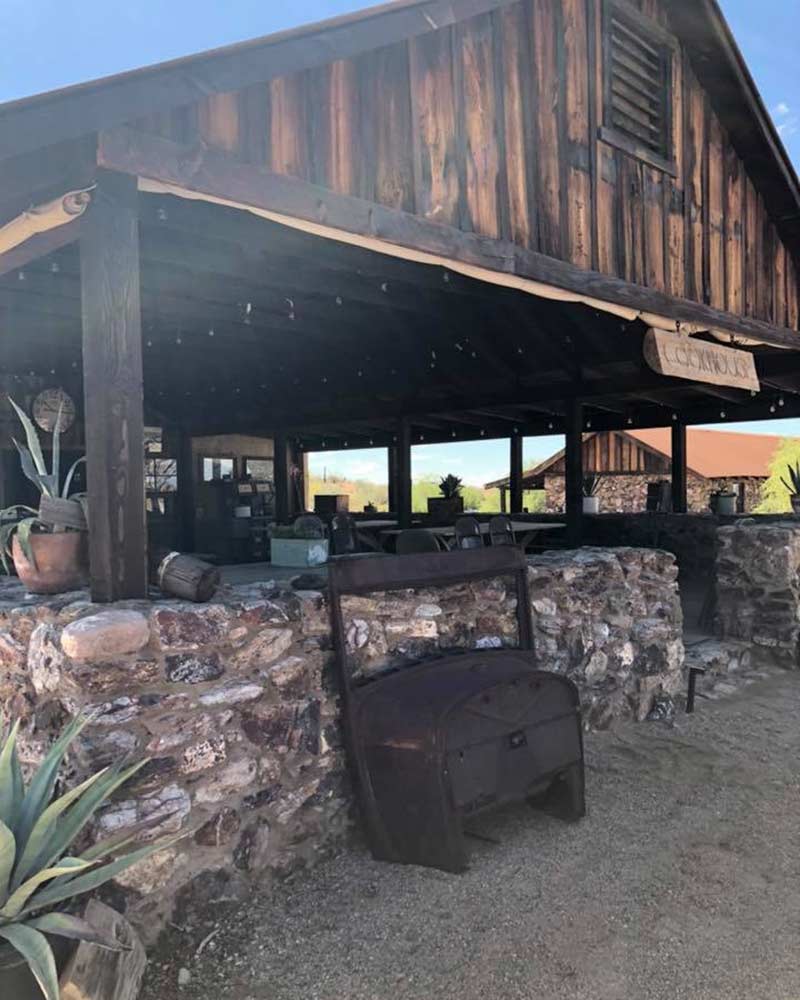
This ironwood tree (olneya tesota), was determined to be two-three hundred years old and in good health after a horticultural evaluation. The legend holds that 18 men met their fate on the branches of this tree, hung for high grading (the theft of rich gold ore) and other crimes.
Henry Wickenburg’s 15 x 20 foot cabin, built in the summer of 1864, was constructed with stone and adobe and has been faithfully restored.
